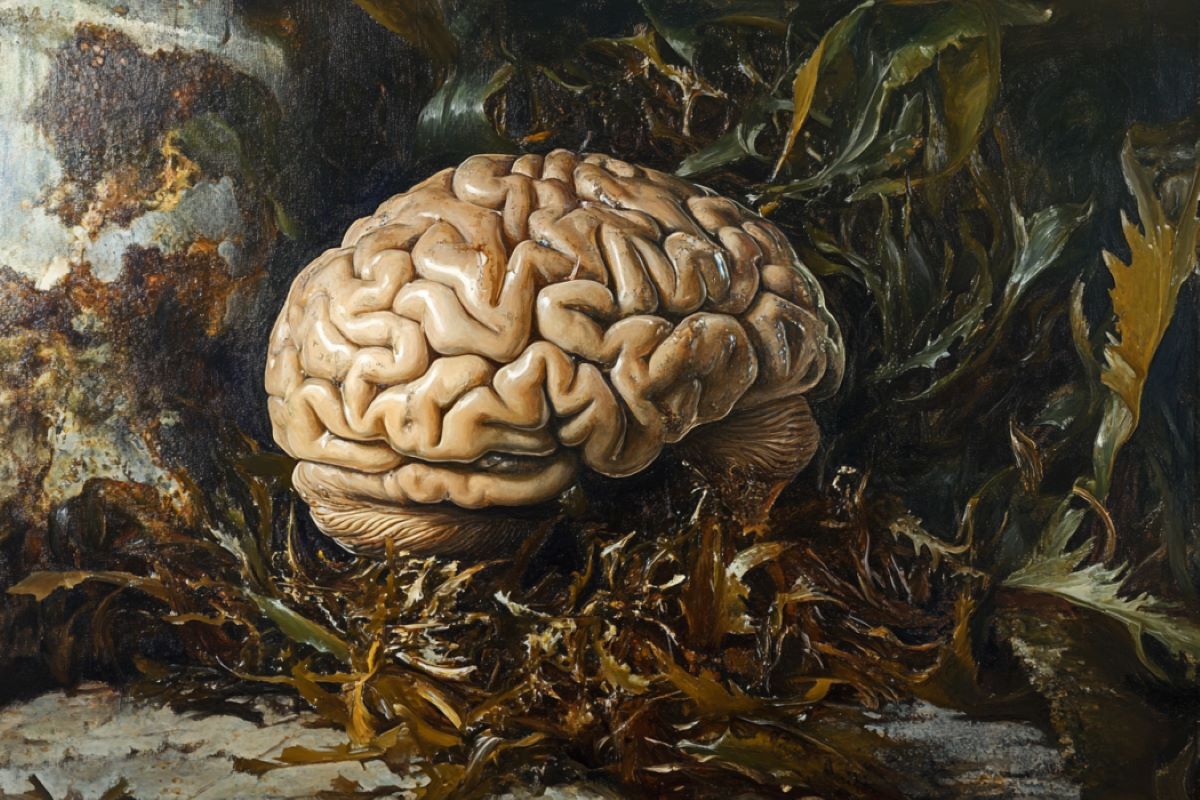Is this better than coffee? You need Parkinson's prevention.
Parkinson’s Disease May Have Link to Stroke March 2017
How coffee protects against Parkinson’s Aug. 2014
Is your competent? doctor ensuring human testing gets done? NO? So you don't have a functioning stroke doctor, do you?
Seaweed Antioxidants Show Promise in Preventing Parkinson’s
Summary: Researchers have found that antioxidants from Ecklonia cava, a type of seaweed, may help prevent Parkinson’s disease by protecting dopamine-producing neurons. In mouse models, these antioxidants restored motor function and improved gut health after exposure to toxins.
Cellular studies revealed that these compounds activate the AMPK enzyme and reduce harmful reactive oxygen species, potentially offering a new approach to combat neurodegeneration. This discovery highlights the potential of Ecklonia cava as a preventive ingredient against Parkinson’s disease.
Key Facts:
- Ecklonia cava Antioxidants: Seaweed polyphenols from Ecklonia cava were shown to improve motor function and gut health in Parkinson’s disease model mice.
- Mechanism of Action: The antioxidants activate AMPK, a crucial enzyme, and inhibit the production of reactive oxygen species that damage neurons.
- Potential Treatment: This research suggests a promising natural approach to preventing Parkinson’s disease, which currently lacks curative treatments.
Source: Osaka Metropolitan University
Parkinson’s disease is a neurodegenerative disease caused by the loss of neurons that produce dopamine, a neurotransmitter involved in motor control and cognitive function.
As the global population ages, the number of Parkinson’s disease patients is rapidly increasing. Parkinson’s disease is induced by neuronal damage due to excessive production of reactive oxygen species.

Suppression of reactive oxygen species generation is essential because it is fatal to dopaminergic neurons that manage dopamine neurotransmitters. Currently, only symptomatic treatment is available, so the development of treatment regimens and prevention methods is necessary.
Fortunately, Associate Professor Akiko Kojima-Yuasa of Osaka Metropolitan University’s Graduate School of Human Life and Ecology led a research group that has verified the physiological effect of Ecklonia cava polyphenols, seaweed antioxidants, on the prevention of Parkinson’s disease.
In this study, two types of motor function tests were conducted using Parkinson’s disease model mice that were orally fed the antioxidants daily for one week and then administered rotenone.
Results showed that motor function, which was decreased by rotenone, was restored. There was also improvement in intestinal motor function and the colon mucosa structure, a special tissue that covers the colon.
Further, cellular experiments using Parkinson’s disease model cells verified the biochemical interaction of the preventive effect of Ecklonia cava. Validation results showed that the antioxidants activate the AMPK enzyme (adenosine monophosphate-activated protein kinase), an intracellular energy sensor, and inhibit the production of reactive oxygen species that cause neuronal cell death.
“This study suggests that Ecklonia cava antioxidants may reduce neuronal damage by AMPK activation and inhibiting intracellular reactive oxygen species production,” stated Professor Kojima-Yuasa. “It is hoped that Ecklonia cava will be an effective ingredient in the prevention of Parkinson’s disease.”
About this Parkinson’s disease research news
Author: Yung-Hsiang Kao
Source: Osaka Metropolitan University
Contact:Yung-Hsiang Kao – Osaka Metropolitan University
Image: The image is credited to Neuroscience News
Original Research: Open access.
“Ecklonia cava Polyphenols Have a Preventive Effect on Parkinson’s Disease through the Activation of the Nrf2-ARE Pathway” by Akiko Kojima-Yuasa. Nutrients
Abstract
Ecklonia cava Polyphenols Have a Preventive Effect on Parkinson’s Disease through the Activation of the Nrf2-ARE Pathway
BCL-2, a crucial regulator of the mitochondrial apoptotic pathway, maintains myeloblast survival by sequestering the pro-apoptotic protein BAX. Venetoclax (VEN) is an orally bioavailable BH3-mimetic protein that selectively inhibits BCL-2 and has shown promise against acute myeloid leukemia (AML). The direct cytotoxic effects of VEN are mediated by BCL-2 inhibition, and the subsequent increase in BAX/BAK results in mitochondrial outer membrane permeabilization.
Although the activities of VEN on leukemia cells are being elucidated, its immunological impact on anti-leukemic immunity is unknown. Allogeneic hematopoietic cell transplantation (allo-HCT) is a potentially curative treatment for patients with high-risk AML, and eradication of leukemia cells largely relies on anti-leukemic immunity “graft-versus-leukemia effects,” mainly exerted by donor-derived T cells.
Some reports suggest that VEN preserves T-cell function, particularly in effector T cells. Therefore, we hypothesized that among patients who experienced relapsed AML after allo-HCT, VEN might effectively eliminate leukemia cells not only through its direct anti-tumor activity but also by preserving anti-leukemic immunity.
In this clinical observational study, we explored the efficacy and immunological activity of treatment with VEN and azacitidine (VEN therapy) by analyzing the clinical outcomes and pre- and post-treatment samples of 12 patients who received VEN therapy for relapsed AML after allo-HCT at our institution.
No comments:
Post a Comment